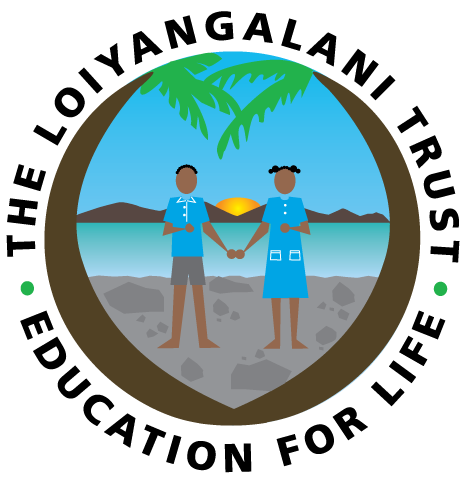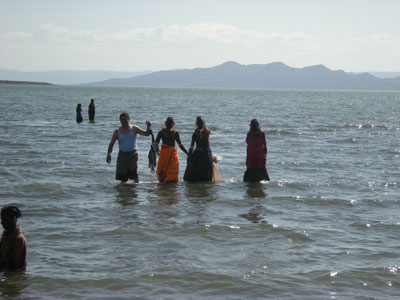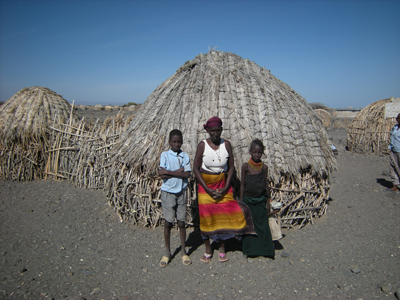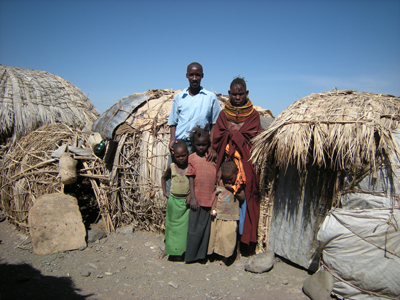



Loiyangalani is nearly 500 miles north of Nairobi, the capital of Kenya. The journey by road takes 2 days as the final stretch is on rough track roads. At times the road can be blocked by land slides, rock falls or floods. Lorries that make the journey tend to make excessive charges for the goods they bring. The final section of the road passes along the shores of Lake Turkana.

Lake Turkana, which was formerly known as Lake Rudolf extends north to the border with Ethiopia. The lake is vast, being some 290 km at its longest and 30km at its widest points. Lake Turkana is situated in the Great Rift Valley.
The lake has no outlet and the only water loss is through evaporation. Therefore the water is salty and high in sodium which causes problems for those who drink the water.
The lake contains many varieties of fish, the most common of which is the Tilapia. Nile Perch and Solomon Fish are also caught. The lake contains Nile crocodiles and turtles whilst the shores are home to scorpions and carpet vipers.

The population of Loiyangalani is approximately 6000 adults. There are large numbers of nomads in the area who drift in and out of the town at various times of the year. The dominant tribes are the Turkana, Samburu and Rendille.
There is a natural spring in the centre of Loiyangalani. This is fed by underground springs situated in the hills 15 miles away. Growing anything is not easy due to the high rate of evaporation and also the very rocky volcanic terrain.
The better off inhabitants have built houses in the centre of the town using stone and corrugated iron. Loiyangalani has no mains electricity.
The poorer people live on the outskirts of Loiyangalani. Their huts are built primarily with reeds. These have to be gathered from areas up to 8 miles away, because they are not allowed to use materials from the trees in the town. Posts, that support the huts, have to be dug into the hard ground using very primitive tools. Sometimes old sacks are used in the roof. Mats made from reeds are used for sleeping. Constant checks have to be made for scorpions which like to escape from the heat.
The area is very hot. Rain is supposed to come during the rainy season but has been more unreliable recently. There is a constant wind during the day for most of the year which ensures the area is hot and dusty.
Goats are looked upon as symbols of wealth. They are used for dowries and families only kill and eat goats on special occasions. Over-grazing is a huge problem. Nothing will grow unless the area is fenced to keep the goats out
The nomads live with their goats in the outlying areas. Often young boys live with the herds relying on the milk to provide sustenance.
The people live on a basic diet of "posho" which is ground maize and water, supplemented by beans when they can afford them.
Fish are eaten by some families, but many do not have the means to catch them.
There are 2 health clinics in Loiyangalani, one run by the Catholic sisters. There is no hospital. Supplies of medicines are very erratic and often past their use-by dates. HIV, malaria, snake and scorpion bites, bronchitis and heat rashes are the main afflictions attended to by the Sisters. There are also nutritional and natal problems.


Registered Charity No 1148989.
Copyright © 2010 - 2025 The Loiyangalani Trust. All Rights reserved.